Derivation
Fist Theory uses the term 'deriviation' to categorize additives by their composition or source.
Tinctures
A tincture is a concentrated liquid extract of herbs, plants, or medicinal substances, often taking the form of aromatic oils. A few drops of a tincture added to a batch of fisting lube can generate a warm or cool sensation within the fist chute that may potentially be accompanied by a mild numbing effect for prolonged play.
Many tinctures are marketed as essential oils. The claims associated with these oils often lack robust scientific data regarding their efficacy. Some offer only a placebo effect.
Tinctures can be purchased online or at health food stores.
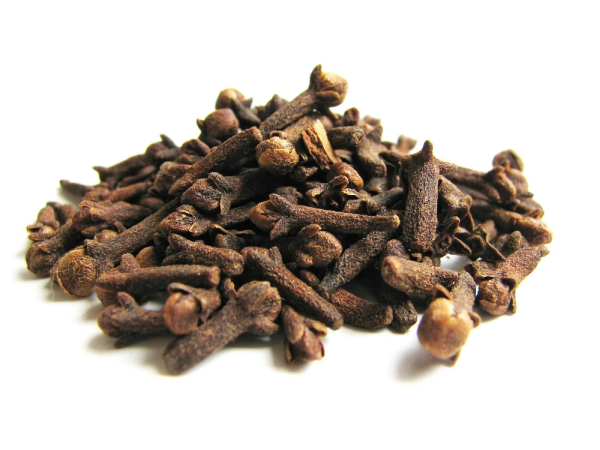
Figure 1.2: Unrefined Clove
Clove oil is derived from clove and is one of the most common lubrication additives. It is both highly aromatic and highly allergenic.
Tinctures, like all other additives are not inert. They can trigger allergic reactions in small quantities. In large quantities, they can cause direct damage to mucosal tissue. They should never be applied directly to the fist chute in concentrated form.
Pharmaceuticals
Pharmaceutical additives include non-prescription medications, prescription medications, and illicit drugs.
The most common pharmaceutical additives are non-prescription creams or ointments that provide analgesic properties. Menthol, which may have a minty aroma and may trigger a warm sensation, is typically the active ingredient in most of these additives.
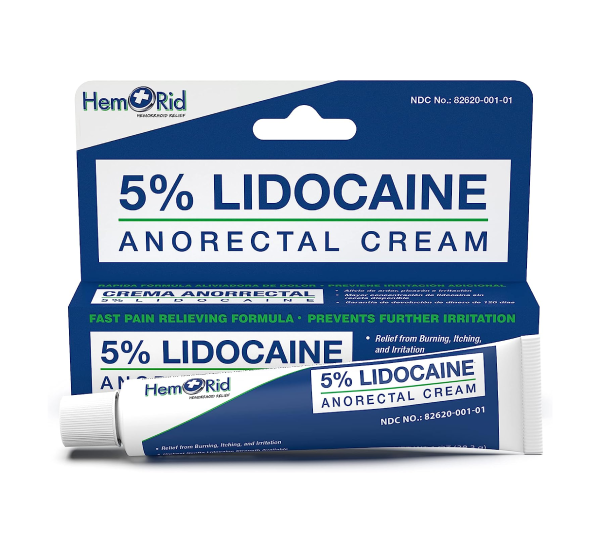
Figure 1.3: Lidocaine Anorectal Cream
Some pharmaceuticals are specifically formulated for the rectum and anal canal.
Less common pharmaceutical additives include reparative medications, such hemorrhoidal creams that soothe the tissue of the fist chute and promote healing with specific vitamin complexes.
Common examples of pharmaceutical additives include topical Diclofenac gel (Voltaren Cream), lidocaine, and phenylephrine and pramoxine (Preparation H).
Cosmetics
Both the fist chute and fisting lube are altered by cosmetic additives.
Lube modifications include changes to the texture and aroma of a lubrication.
Chute modifications include how the intestinal tissues interact with fluids from the lube. The cosmetic's active ingredients coat the fist chute with a film that decreases fluid absorption rate and can even draw moisture into the chute from nearby tissue.
QUICK REFERENCE
Additionally, cosmetics have ingredients that may extend the shelf life of lubes.
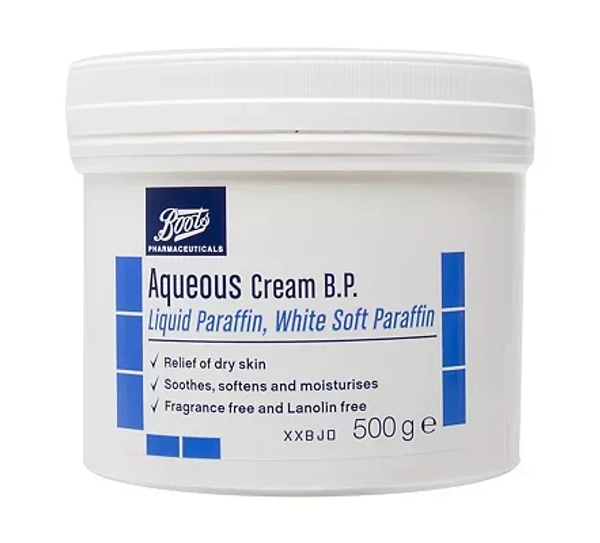
Figure 1.4: Aqueous Cream by Boots Pharmacy
The active ingredients in some cosmetic products, such as Aqueous Cream, prolong the lubricity of lubes by reducing the absorption of the moisture within lube inside the fist chute.
Traditional Bases
When more than one tradtional base is used in the preparation of lube, the proportions used will classify the base as an additive, a supplemental base, or a dual base.
These proportions and classifications are arbitrary. Fist Theory uses 15/85 and 50/50 as the identifying thresholds. When bases are used in the same proportions (50/50), they are dual bases. Any ratio less than 15/85 is considered an additive, while anything else is supplemental.
When two bases are used and the second base is an additive, only a few of its properties are manifest in the final concoction. For example, using a squirt of silicone lube in a recipe will increase a lube's shelf life, but will not have the distinct lubricity of pure silicone lube. In this case, the volume of silicone is less that 15%; therefore, it is considered an additive.




Figure 1.5 [ A - D ]: Secondary Bases Versus Bases as Additives
When two bases such as a PEO (X lube) and a lipid (Crisco) are used, the ratio determines if one of the bases functions as an additive or if it functionas as a dual base.
VOCABULARY
Traditional Base
- Noun Phrase In single-base lubrication recipes, the only base; typically a lipid or alphabet lube
Dual Base
- Noun Phrase One of the two bases in recipes with bases mixed together in equal proportions (50/50)
Supplemental Base
- Noun Phrase In recipes with multiple bases, any base that is less than 50% percent of the base ratio but greater than 15% of the base ratio.
Functional Properties
Additives can be categorized according to the properties they introduce to the lubrication. These properties generally fall into four categories:
- Physical | Includes properties observed by the physical senses: sight, smell, taste, and touch.
- Physiological/Sensory | Introduces sensations within the hole such as numbing, temperature perception, and anti-inflammation.
- Antimicrobial | Decreases rapid colonization by microbials and may reduce the spread of infections.
- Neurological | Modifies brain chemistry and alters perceptive abilities.
Some additives are very limited in scope and introduce a single functional property. Others additives are very potent and introduce multiple properties. For example, Clove adds thermal properties, antimicrobial propertries, aromatic properties, anti-inflammatory properties and analgesic properties.
Physical Properties
In most cases, additives are used to create physiological responses within the hole. For example, menthol is often used to numb the fist chute, but it may also modify the lube's scent, flavor, color, and texture. Physical changes are often unintentional and include:
- Scent (Aromatic) | Scent changes are usually introduced by additives that have analgesic or anti-inflammatory properties. Clove, which smells woodsy with hints of ginger, is added to numb the hole, decrease inflammation, trigger a tingling sensation, and hamper microbial growth.
- Taste (Gustative) | Taste and smell are closely linked senses. As such, taste changes often occur with scent changes. In some cases, specific flavor profiles can be added, such as strawberry or cherry. In other cases, general gustative receptors are activated (saltiness, bitterness, sweetness, sourness, or meatiness).
- Feel (Texture/Consistency) | Texture modification is frequently caused when a second base is used as an additve. Dual-based lubes usually feel silkier than single-base lubes.
- Look (Appearance/Coloration) | With the exception of illuminescent additives, changes in appearance (usually opacity) are byproducts of other additive changes. Adding color that masks bleeding is not recommeneded.






Figure 1.6 [ A - F ]: Physical Properties of Additives
Additives can change the way we perceive lube, including coloration, odor, texture, and taste.
Physiological Properties
Additives are primarily* used to improve fisting experiences by altering physiological responses to stimuli. These types of additives can be grouped into three general categories:
- Therapuetic | These additives provide relief to tissues damaged by fisting:
- Anti-inflamatories decrease swelling by suppressing prostaglandins; pain decreases as a result
- Reparatives supply materials that help repair irritated tissues
- Analgesics | These additives block transmission of pain signals to the brain.
-
Somatic | These additives stimulate nerves and trigger rapid signals to the brain. In some cases, the end result is pleausrable and in some cases, the end result is irritable. Common manifestations include:
- Thermal Perception (sensations of warmth or coolness)
- Paresthesia (tingling)
* Changes to physical properties and extending shelf life are usually secondary considerations of additives.



Figure 1.7 [ A - C ]: Physiological Effects of Additives
Additives can affect how the fist chute reacts to fisting, including suppressing inflammation, blocking pain, and stimulating chemical receptors that trigger tingling or temperature sensation.
Antimicrobial Properties
Certain additives may slow microbial growth in lubes; however, there are very few studies related to antimicrobial ingredients used in rectal intercourse. Available studies document the difficulty of assessing infections related to lubrications.1
Neurological Properties
Some chem fisters mix illicit drugs into their lubrications that alter mental states.
QUICK REFERENCE
Apart from overdosing concerns related to bypassing first-pass metabolism, some substances, especially crystal meth (T), weaken, destroy, and scar the mucosal membrane. A compromised membrane increases perforation risks.
The active ingredients in marijuana oils (CBD and THC) may have other medicinal values beyond alteration of mental status, but should be used with caution.
Health Considerations
Additives, by defition, are not inert. Fisters utilize them to alter the way cells and tissues function. At a cellular level, they can have detrimental health consequences including: allergic responses, tissue damage, diminished organ function, and cancer. They can also increase injuries from risky activities and behavior.
Tissue and Organ Damage
Pharmaceutical additives contain many compounds that are "harmless" to skin cells but are fairly toxic to more sensitive cells inside the body. When these compounds are absorbed through the rectum and colon, they bypass evolutionary mechanisms that decrease their potency. These compounds wreak havoc on various organ systems:
- Rectum and Colon | Direct exposure to caustic agents can cause burns and may weaken the intestinal lining. This increases the likelihood for tears, perforation, and cancer mutations. Additionally, anesthetic additives may decrease sensation and increase mechanical injuries from fisting itself, including tearing, bruising, and excessive tissue sloughing.
- Kidneys | Nephrons, the functional unit of the kidney, are damaged while attempting to excrete certain additve agents. Additionally, the kidneys can be damaged by rapid changes in blood velocity.
- Heart and Blood Vessels | Rapidly dilating and constricting vessels occur as the body is exposed to certain additives and the hormones that the body uses in an attempt to regulate the effects of additives. Increased risk of vessel damage, vessel blockage, and heart attack are possible outcomes.
- Liver | Active ingredients that were not initially catabolized in the small intestine can trigger damage to liver cells. Permanent liver cell damage (cirrhosis) occurs with inflammation triggered as the liver metabolizes toxic agents.
Allergic Reactions
Lubrication and additives absorbed directly into the bloodstream can trigger unexpected immune responses.
Once the immune system encounters unexpected molecules, it will begin creating antigens to attack and remove potentially harmful invaders. In most cases, the immune response is minimal. In other cases, rashes, itching, swelling, fatigue and malaise may all be manifested.
Compromised Judgement
Additives can affect judgement and increase risk tolerance through psychological, physical, or physiological means:
- Physiological | Chems used as additives can alter cognitive processing centers of the brain. Pain is often masked. Stimulated pleasure centers within the brain encourage fisters to 1) extend sessions beyond rationale session durations, and 2) attempt riskier fisting activities such as extreme depth play.
- Physical | Analgesic, somatic, and anti-inflammatory additives may decrease pain or the perception of pain. This decrease allows fisters to continue playing when normally they would stop activities that are causing injury to the fist chute.
- Psychological | Placebo effects with additives are common. Myths and misinformation provide false courage, which often leads to attempting advanced activities beyond the hole's present capabilities.
Fister's with increased risk tolerance are more likely to engage in extreme fisting, including advanced depth exploration, rapid pistoining, intense stretching, and vigorous punch play. These activities usually require months or years of hole conditioning to execute safely without injury.
Numbing Agents with Dr. Carlton[ 1 ]
Off-label Usage
Most additives are topical and are not formulated for rectal use. Very few studies exist regarding rectal application in quantities associated with fisting. With that in mind, consider the following regarding frequently used additives:
- Dosage | When formulating topicals for skin, manufacturers must increase dosages to accommodate for loss due to skin impermiability. In other words, they must include higher dosages of active ingredients because your external skin only absorbs a small percentage of those ingredients. You may be inadvertantly overdosing when using rectally.
- Route | When a topical is absorbed rectally, there is no first-pass effect to reduce existing dosages to non-toxic levels. You may be causing substantial kidney and liver damage.
- Studies and Tests | There are few studies that evaluate harmful side effects of rectal use. Those studies that do exist do not typically consider the quantity of additive used with fisting and thus, do not give accurate data regarding health effects.
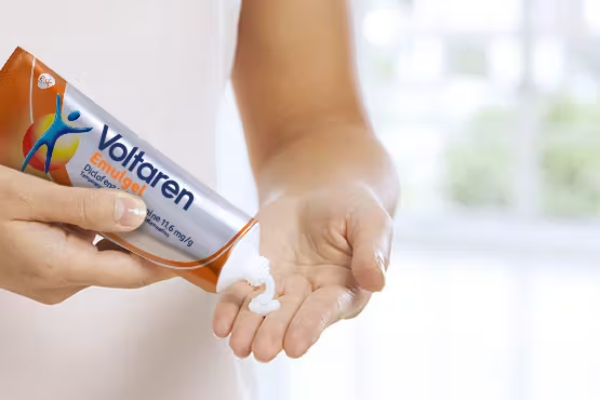
Figure 2.1: Incorrect Application Strategy
According to the manufacturer, you shouldn't apply Voltaren gel with a bare hand due to concerns regarding excess absorption in a specific area.
Case Study: Off-label Usage of Voltaren Gel
A common additive used by many fisters is Voltaren Gel. The generic name for Voltaren gel/cream is diclofenac gel.
Diclofenac is an NSAID (like acetaminophen) and thus, nephrotoxic at high levels. Oral diclofenac interacts with dozens of medications and older literature suggests links to heart attacks and strokes (although these symptoms are not listed in current US databases).
The manufacturer indicates only 6% of the active ingredient is absorbed through the skin, prohibits application of more than eight grams to a single area within a 24 hour period, and limits total application to just 32 grams per day. Absorption in the rectum is much higher than 6%, so the limitations set for topical application are too large. Cutting recommended daily allowances in half is highly problematic.
Fisters use about 5 grams for hole application and up to 15 grams (15 ml / 1 tablespoon) in lube application. Based on rectal absorption rates compared to skin, this exceeds recommended allowances. The likelihood of absorbing enough of diclofenac sodium to cause noticable kidney damage and severe side effects with long term use is elevated, especially with no first-pass effect.
Quick Reference Table
Additive Characteristics and Properties
Unfortunately, content development for this section is incomplete. Please return in the future.
| Additive | Derivation | Functional Properties | Active Ingredient | Notes/Warnings | ||||||||||||||
|---|---|---|---|---|---|---|---|---|---|---|---|---|---|---|---|---|---|---|
| Tincture | Cosmetic | Pharmaceutical | Lubrication Bases | Anti-inflammatory | Antimicrobial | Analgesic | Appearance/Coloration | Aromatic | Cognitive / Neurological | Paresthesia (Tingling) | Reparative | Taste | Thermal Perception | Texture/Consistency | ||||
| Absorbine | + | 5 | 6 | 7 | 8 | 9 | 10 | 11 | 12 | 13 | 14 | 15 | 16 | 17 | ||||
| Aloe | + | + | + | 5 | 6 | 7 | 8 | 9 | 10 | 11 | 12 | 13 | 14 | 15 | 16 | 17 | ||
| Alphabet Lubes | + | + | PEG/PEO | |||||||||||||||
| Anusol | + | 5 | 6 | 7 | 8 | 9 | 10 | 11 | 12 | 13 | 14 | 15 | 16 | 17 | ||||
| Aqueous Cream | + | 5 | 6 | 7 | 8 | 9 | 10 | 11 | 12 | 13 | 14 | 15 | 16 | 17 | ||||
| Aspercreme | + | 5 | 6 | 7 | 8 | 9 | 10 | 11 | 12 | 13 | 14 | 15 | 16 | 17 | ||||
| Avacado Oil | + | + | + | + | + | Vitamins A, D, E | ||||||||||||
| Bag Balm | + | 5 | 6 | 7 | 8 | 9 | 10 | 11 | 12 | 13 | 14 | 15 | 16 | 17 | ||||
| Bengay | + | + | + | + | + | + | Menthol, Methyl Salicylate, CamphorC, LidocaineC |
| | ||||||||||
| Benzocaine | + | 5 | 6 | 7 | 8 | 9 | 10 | 11 | 12 | 13 | 14 | 15 | 16 | 17 | ||||
| Calendula | + | + | 5 | 6 | 7 | 8 | 9 | 10 | 11 | 12 | 13 | 14 | 15 | 16 | 17 | |||
| Camphor | + | + | + | + | + | + | + | + | + | + | Camphor (Turpentine) | | | | ||||||
| Capsacin | + | + | + | 5 | 6 | 7 | 8 | 9 | 10 | 11 | 12 | 13 | 14 | 15 | 16 | 17 | ||
| CBD | + | + | + | 5 | 6 | 7 | 8 | 9 | 10 | 11 | 12 | 13 | 14 | 15 | 16 | 17 | ||
| Chili Oil | + | 5 | 6 | 7 | 8 | 9 | 10 | 11 | 12 | 13 | 14 | 15 | 16 | 17 | ||||
| Chlorhexadine | + | + | + | + | Chlorhexadine Gluconate | | | ||||||||||||
| Clove Oil | + | + | + | + | + | + | + | + | Eugenol | |||||||||
| Coconut | + | + | + | 5 | 6 | 7 | 8 | 9 | 10 | 11 | 12 | 13 | 14 | 15 | 16 | 17 | ||
| Cornhusker's Lotion | + | 5 | 6 | 7 | 8 | 9 | 10 | 11 | 12 | 13 | 14 | 15 | 16 | 17 | ||||
| Dandelion | + | + | 5 | 6 | 7 | 8 | 9 | 10 | 11 | 12 | 13 | 14 | 15 | 16 | 17 | |||
| Diclofenac Gel | + | + | + | Diclofenac Sodium | | | | |||||||||||||
| Eucalyptus Oil | + | 5 | 6 | 7 | 8 | 9 | 10 | 11 | 12 | 13 | 14 | 15 | 16 | 17 | ||||
| GlycerinA | + | + | + | + | Glycerin | |||||||||||||
| Gums | + | + | Xanthan, Guar, etc. | |||||||||||||||
| Jojoba Oil | + | + | 5 | 6 | 7 | 8 | 9 | 10 | 11 | 12 | 13 | 14 | 15 | 16 | 17 | |||
| Lanacane | + | 5 | 6 | 7 | 8 | 9 | 10 | 11 | 12 | 13 | 14 | 15 | 16 | 17 | ||||
| Lanolin | + | + | + | 5 | 6 | 7 | 8 | 9 | 10 | 11 | 12 | 13 | 14 | 15 | 16 | 17 | ||
| Lavendar Oil | + | 5 | 6 | 7 | 8 | 9 | 10 | 11 | 12 | 13 | 14 | 15 | 16 | 17 | ||||
| Licorice Oil | + | 5 | 6 | 7 | 8 | 9 | 10 | 11 | 12 | 13 | 14 | 15 | 16 | 17 | ||||
| Lidocaine | + | 5 | 6 | 7 | 8 | 9 | 10 | 11 | 12 | 13 | 14 | 15 | 16 | 17 | ||||
| Menthol | + | + | + | + | + | + | + | + | Menthol | |||||||||
| Mentholatum | + | + | + | + | + | + | + | + | + | Menthol, Camphor, Eugenol, Thymol | | | | |||||||
| Melaleuca Oil | + | 5 | 6 | 7 | 8 | 9 | 10 | 11 | 12 | 13 | 14 | 15 | 16 | 17 | ||||
| Mint Oil | + | + | + | + | + | + | + | Menthol, Menthone | ||||||||||
| Peppermint Oil | + | + | + | + | + | + | + | Menthol, Menthone | ||||||||||
| Pre-mixed Fisting Lubes | + | + | + | + | + | + | + | + | + | Various | Lube Specific | |||||||
| Preparation H | + | 5 | 6 | 7 | 8 | 9 | 10 | 11 | 12 | 13 | 14 | 15 | 16 | 17 | ||||
| Shea Butter | + | + | 5 | 6 | 7 | 8 | 9 | 10 | 11 | 12 | 13 | 14 | 15 | 16 | 17 | |||
| Silicone-based Lubes | + | + | + | Silicone | ||||||||||||||
| Spearmint Oil | + | + | + | + | + | + | + | Menthol, Menthone | ||||||||||
| Tea Tree Oil | + | 5 | 6 | 7 | 8 | 9 | 10 | 11 | 12 | 13 | 14 | 15 | 16 | 17 | ||||
| Tiger Balm | + | 5 | 6 | 7 | 8 | 9 | 10 | 11 | 12 | 13 | 14 | 15 | 16 | 17 | ||||
| THC Oil | + | + | 5 | 6 | 7 | 8 | 9 | 10 | 11 | 12 | 13 | 14 | 15 | 16 | 17 | |||
| UV GungeGLO | + | Unknown Fluorophores | ||||||||||||||||
| Voltaren Gel | + | + | + | Diclofenac Sodium | | | | |||||||||||||
| Witch Hazel | + | + | 5 | 6 | 7 | 8 | 9 | 10 | 11 | 12 | 13 | 14 | 15 | 16 | 17 | |||
Table #.#: Title
Lorem ipsum dolor sit amet, consectetur adipiscing elit, sed do eiusmod tempor incididunt ut labore et dolore magna aliqua. Ut enim ad minim veniam, quis nostrud exercitation ullamco laboris nisi ut aliquip ex ea commodo consequat. Duis aute irure dolor in reprehenderit in voluptate velit esse cillum dolore eu fugiat nulla pariatur. Excepteur sint occaecat cupidatat non proident, sunt in culpa qui officia deserunt mollit anim id est laborum.
- Glycerin has multiple sources: Food-grade Extract, Cosmetic Creams, and Glycerin-based lubes
- Available in specific, but not all formulations/products.
Legend
Application Site Reactions (Burning, Swelling)
Allergic Reactions (Localized)
GI Issues (Diarrhea or Constipation)
Liver Damage (Hepatoxicity)
Kidney Damage (Nephrotoxicity)
Anaphylatic Reactions (Severe Allergies)
Seizure
Impaired Breathing
Thrombotic Events (Stroke, Heart Attack)
| Separates minor and severe side effects
Use to convert + to checkmarks once table is complete:
Protocols
Protocols include standard practices and etiquette followed by the majority of the fisting community. Typically, these are things that new fisters pick up over time.
Etiquette
Etiquette refers to how you treat others in a specific fisting scenario. There are three etiquette guidelines related to lubrication additives.
Etiquette Explained
Who: All Parties
When: Prior to Application
What: Lube Disclosure
Group: Apothecary
Lube ingredients should be disclosed between partners prior to applying lube.
Even when a bottom follows the specific protocol of brining his own lube (BYOL), his top has a right to know if there are active ingredients within the lube.
For example, an uninformed partner could be exposed to:
- Chems which may affect his judgement, alter his perception, remove his ability to consent, or even cause overdoses
- Allergens which may trigger hole reactions (in bottoms), hand/arm reactions (in tops), and systemic reactions (in tops and bottoms)
- Irritants that may cause other physiological responses like burning and nausea
Anecdotal Narrative

Figure 3.1: Additive Disclosure
Informing partners (tops and bottoms) regarding lubrication additives prevents unwanted consequences.
Eduardo knocked on the door to my hotel room. I answered naked, and he stripped down as soon as the door was shut. Both our holes were eager for some wrecking.
"You wanna go first?" I asked, knowing his preference for bottoming.
"Nah. You're the host, I'll take a stab at your hole first!"
"A true gentleman and one savy on guest behavior. I'm excited to see what you can do inside me." I said as I positioned myself on the bed. "Here's my lube."
"Mind if we try mine?" he asked.
"Is there any specific reason?" I responded.
"I mix clove, mint, and lavendar oils in to relax the hole. It makes my cunt super relaxed. I'm sure it will do the same to yours!" he said with a playful grin.
"I'm always up to learning new things." I responded.
It tingled. It tingled more. It started to burn. My hole clamped up. We had to stop.
We flipped and I fisted him for a half hour, then flipped again, but my hole was still closed up.
"Sorry about your hole. This has never happened before" he said softly as I waived the white flag.
"It's okay. I'm happy being in your hole, and I'm sure it will relax within a few hours.
Unfortunately, it didn't. I was up all night with the shits as my hole tried expelling the irritants. It took three full weeks to return to normal. Any attempt at fisting during those three weeks resulted in my hole immediately clamping up and extended bouts with diarrhea. I promised myself never to put clove inside my hole again.
— FF Chronicles: 16.03.0068
Additive Index
In this section: Additives | Watchdog Databases
Additives
The following non-comprehensive list includes common and rarely used additivies in fisting lubes. Additional information regarding the chemical properties of additives and lubrication bases is available in several Fist Theory education courses.
QUICK REFERENCE
All Additives
Alphabetical Reference Listing (All)
RULES
- List item in multiple categories used equally
- List item in single category if used almost exclusively
- Table should match alphabet but not by category
- Must show up minimum of 5
- Can show up in 5, 7, 9
Tinctures
Pharmaceuticals
Cosmetics
Supplemental / Dual Bases
Analgesics
Anti-inflammatories / Swelling
Reparatives
Scent (Aromatics)
Taste (Flavorants/Gustative)
Look (Appearance/Coloration)
Feel (Texture/Consistency)
Thermal Perception
Paresthetics (Tingling)
Shelf Life / Antimicrobial
Neurological
It is unwise to add neurological agents as lubrication additives because of the high risk of overdose due to the absence of the First-Pass Effect in drug metabolism. Cognitive effects of neurological agents are addressed in Fist Theory's pharamacuetical courses.
THC and CBD are occasionally delivered via suppository and are the only cognitive additives discussed in this course.
QUICK REFERENCE
Derivative Listing
- Cosmetics
- CBD Cream
- Pharmaceuticals
- CBD Ointment
- THC Oil
- Pre-mixed Fisting Lubes
- Fort Troff Grunt Grease CBD
- Fist It CBD
Key / Legend
Bengay
Bengay is an ointment composed of menthol (10% - 16%) and methyl salicylate (18% to 30%). Methyl salicylate (an aspirin-like product) can cause hearing loss and is dangerous in high doses. Fifteen millliters (1 tbsp) at 30% concentration is equivalent to approximately 10-15 aspirin. A small tube is 30 mL (2 tablespoons).
PHARMACEUTICAL
Bengay
Thermal Perception and Paresthesia
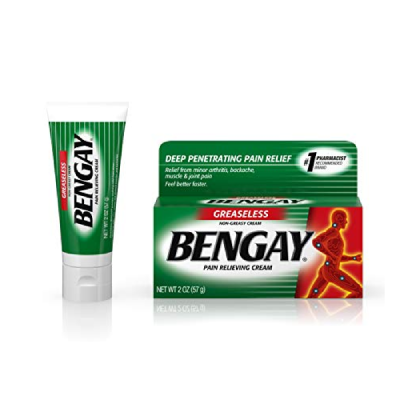
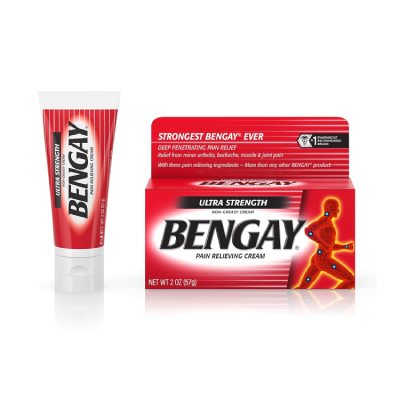
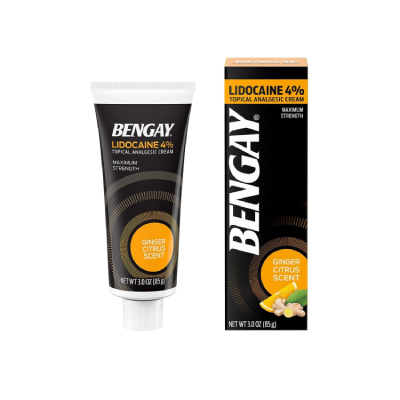
Data Sheet
- Derivation: Pharmaceutical
- Primary Purpose: Introduces tingling and warm/cool sensations to the fist chute.
- Secondary Purpose: Mildly decreases swelling. Confuses pain receptors to simulate temporary pain relief.
- Active Ingredients: Menthol, Methyl Salicylate, Lidocaine*, and Camphor* (* limited to some formulations)
- Health Concerns: May also cause some burning in mucosal tissue. May interact with medications contra-indicated with Aspirin. Overdosing can trigger breathing issues and coma. Apply only a minute amount to avoid serious health consequences, including death.
Functional Properties
- Physical: Aromatic | Creates a menthol scent.
- Physiological: Anti-inflammatory, Analgesic, Paresthesia & Thermal Perception | Causes warm and cold tingling sensations to mask pain. Provides minimal swelling relief. Directions advise external use only and avoiding broken skin to prevent unintentional overdose.
- Antimicrobial: Antiseptic & Preservative | Impedes/hampers bacterial and fungal growth.
- Neurological: None
Tips
- Amount | Use no more than five milliliters (one teaspoon) directly or in lubrication recipes.
- Toxicity | This additive is not recommended for internal use. Kidney damage and excessive bleeding may occur with frequent internal use.
Camphor (Oil, Cream, Ointment)
Camphor is an oil extract from the wood and bark of the camphor tree and is a potent and somewhat dangerous ingredient for fisting lubes. It can be obtained as an essential oil or from cosmetic and pharmaceutical products, such as Vicks Vapor Rub.
T | C | P Tincture | Cosmetic | Pharmaceutical
Camphor
Thermal Perception and Paresthesia
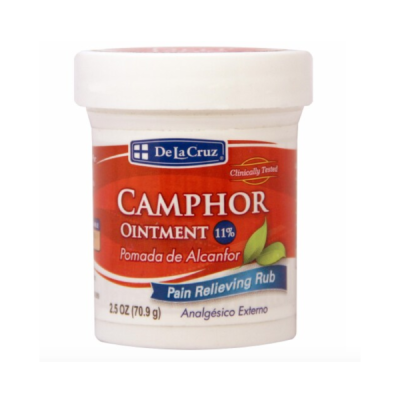
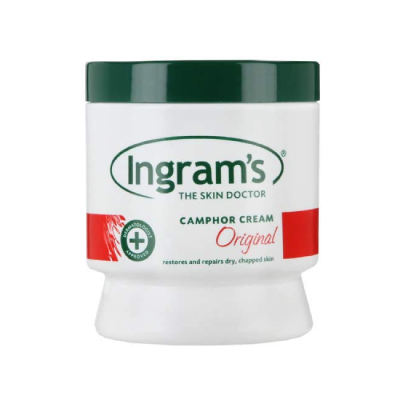
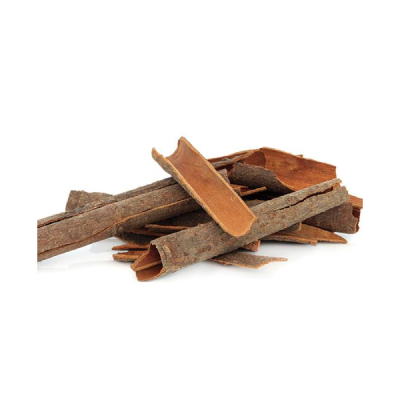
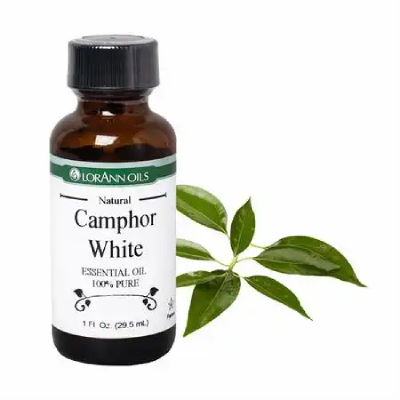
Data Sheet
- Derivation: Tincture | Cosmetic | Pharmaceutical
- Primary Purpose: Introduces tingling and warm/cool sensations to the fist chute.
- Secondary Purpose: Creates woody aroma and provides some pain and swelling relief.
- Active Ingredients: Camphor (from Turpentine)
- Health Concerns: Can trigger seizures in individuals with epilepsy or history of seizure. May also cause extreme burning in mucosal tissue. Apply only a minute amount to avoid serious health consqueences, including liver damage.
Functional Properties
- Physical: Aromatic | Creates a woody, menthol scent.
- Physiological: Anti-inflammatory, Analgesic, Paresthesia & Thermal Perception, Reparative | Decreases swelling and causes tingling sensations. Some documentation mentioned it helps heal tissues but most advised that to never apply to mucosal membranes or broken skin.
- Antimicrobial: Antiseptic & Preservative | Impedes/hampers bacterial and fungal growth.
- Neurological: None
Tips
- Amount | A single drop of oil per 500 ml (2 cups) is sufficient to achieve desired purpose. Use no more than three ml (one-half teaspoon) of ointment or cream in recipes.
- Toxicity | This additive is not recommended for internal use. Camphor oil was withdrawn from US markets in the 1980s due to frequent poisining.
- Products | Camphor is a common ingredient in Vicks Vapor Rub and Bengay ointment.
Chlorhexadine
Chlorhexadine is a powerful antiseptic agent used commonly as preservative. It is often found in mouthwash and prescription mouthwash as well as in hand cleansers and body washes for bed ridden patients.
PHARMACEUTICAL
Chlorhexadine Gluconate
Antimicrobial and Paresthesia
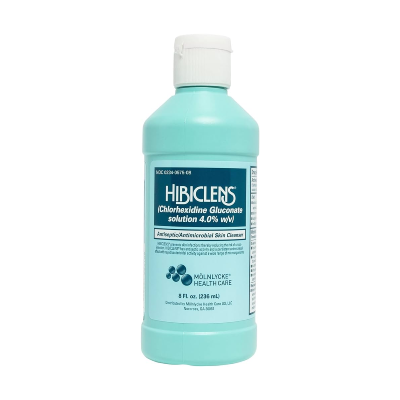
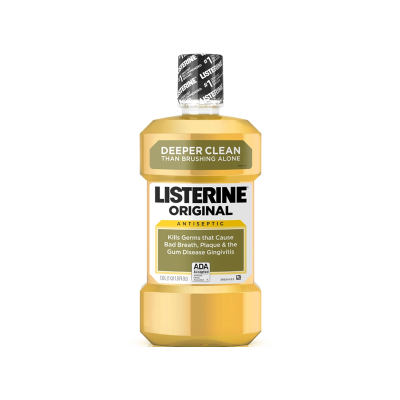
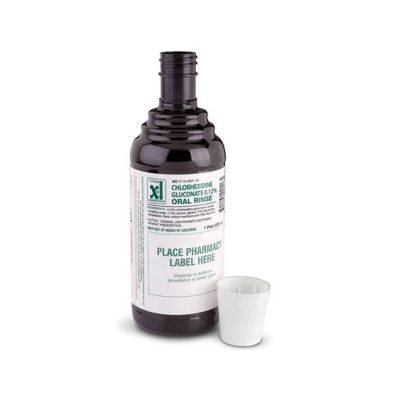
Data Sheet
- Derivation: Pharmaceutical
- Primary Purpose: Prevents microbial colonization or spread by destroying the cell membrane of bacteria and fungi.
- Secondary Purpose: May cause paresthesia and analgesia.
- Active Ingredients: Chlorhexadine Gluconate
- Health Concerns: Can alter the natural microbiome of fist chute, especially with regular use or with depth fisting.
Functional Properties
- Physical: None.
- Physiological: Analgesia, Paresthesia | May cause slight tingling and provide very mild pain relief by affecting nerve cell transmissions.
- Antimicrobial: Antiseptic & Preservative | Impedes/hampers bacterial and fungal growth.
- Neurological: None.
Tips
- Amount | A single drop per 500 ml (2 cups) are sufficient to achieve desired purpose.
- Toxicity | This additive is not recommended for internal use.
- Products | Chlorhexadine Gluconate is a common ingredient in mouthwash and Hibiclens.
Clove Oil
Clove oil is the most common additive used in hand made fisting lubes.
TINCTURE
Clove Oil
Analgesic and Anti-inflammatory
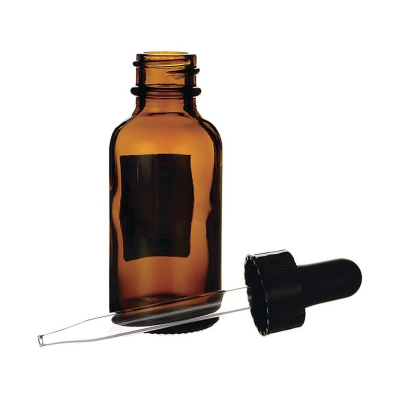
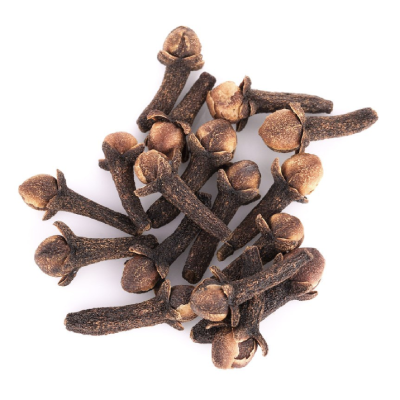
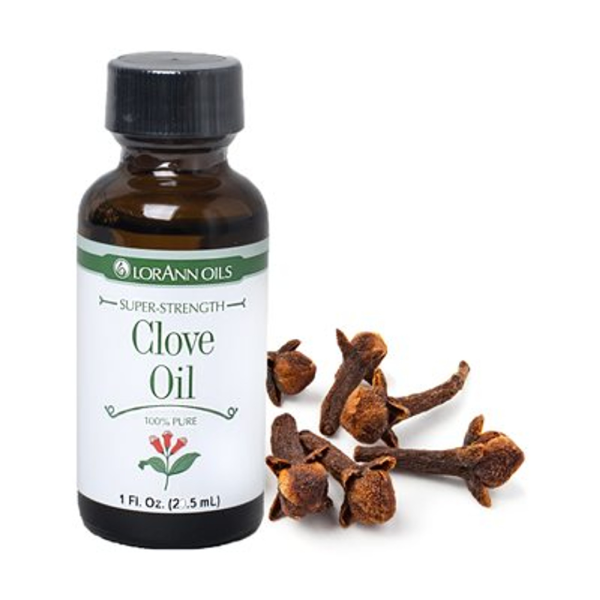
Data Sheet
- Derivation: Tincture
- Primary Purpose: Decreases level of discomfort in fist chute by numbing tissues and reducing swelling.
- Secondary Purpose: Introduce pleasant odor and increase shelf life.
- Active Ingredients: Eugenol
- Health Concerns: Individuals with sensitive skin or eugenol allergies may experience extreme burning sensation. Discontinue use if there is excessive burning or irritation.
Functional Properties
- Physical: Aromatic & Flavorant | Creates strong holiday baking scent and flavor.
- Physiological: Anti-inflammatory, Analgesic, Paresthesia & Thermal Perception | Numbs the hole, decreases swelling, and causes warm tingling sensations.
- Antimicrobial: Antiseptic & Preservative | Impedes/hampers bacterial growth and may minimally decrease transmission risk.
- Neurological: None
Tips
- Amount | Three to five drops per 500 ml (2 cups) are sufficient to achieve desired purpose.
- Cleanup | Ventilate room with open windows or place bowls of white vinegar in play area to remove odor in room. Be sure to wipe down objects that were in contact with this lubrication additive.
- Cleanup | Scrub or wash toys, clothing, and contaminated objects with baking soda paste or white vinegar to remove residual odor.
Diclofenac Gel
Diclofenac gel is a powerful anti-inflammatory ointment with mild numbing properties, meant for topical use only. Voltaren Cream and Solaraze Cream are non-generic forms of diclofenac gel.
A small dollup in the fist chute exceeds dosing limitations and will cause long term damage.
The manufacturer's label suggest no more than 32 grams be applied to skin cells daily and forbids internal use. Of the 32 grams in use, only 6% is absorbed in the skin due to the thick, layered nature of skin cells. In comparison, mucosal tissue of the fist chute will absorb significantly more. Assuming that the fist chute absorbs 50%, one fingernail-size dab is risky. Six percent of 32 grams is about 1.5 grams which is roughly 1-2 milliliters—about a small fingernail size dab.
PHARMACEUTICAL
Diclofenac Gel
Anti-inflammatory and Analgesia
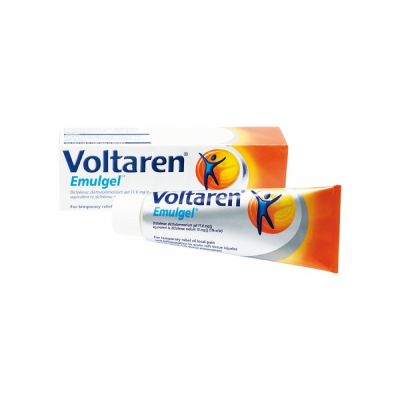
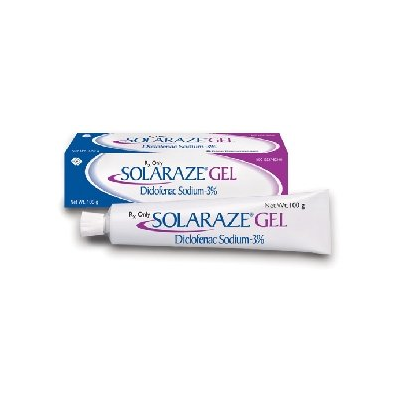
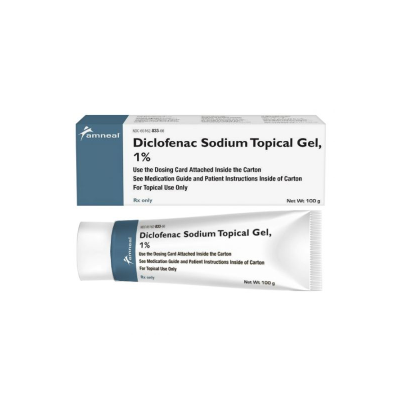
Data Sheet
- Derivation: Pharmaceutical
- Primary Purpose: Decreases swelling in a wrecked hole.
- Secondary Purpose: Mild numbing sensation in fist chute.
- Active Ingredients: Diclofenac Sodium
- Health Concerns: Will cause a short burst of burning immediately after application. Overdosing can trigger thrombotic issues such as heart attack and stroke. Extensive kidney and liver damage occur in off-label usage.
Functional Properties
- Physical: None.
- Physiological: Anti-inflammatory, Analgesic | Blocks production of agents that cause inflammation and signal pain. Provides swelling relief. Directions advise external use only and avoiding broken skin to prevent unintentional overdose.
- Antimicrobial: Antiseptic | Decreases but does not eliminate certain bacterial growth (E. coli and Staphylococcus aureus). Does not increase shelf life.
- Neurological: None.
Tips
- Amount | Use no more than five milliliters (one teaspoon) directly or in lubrication recipes.
- Toxicity | This additive is not recommended for internal use. Kidney damage and excessive bleeding may occur with frequent internal use.
- Products: | Voltaren gel, diclofenac gel (generic name), and Solaraze are all diclofenac products.
Menthol (Oil, Gel, Crystals)
Menthol oil, gel, and crystals are numbing agents and not commonly used additives. Fisters are more likely to use a menthol cream, such as Menthalatum, or mint oil to add menthol to lube.
T | P Tincture | Pharmaceutical
Menthol
Analgesic and Thermal Perception
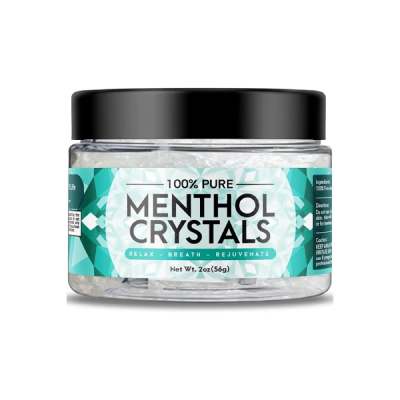
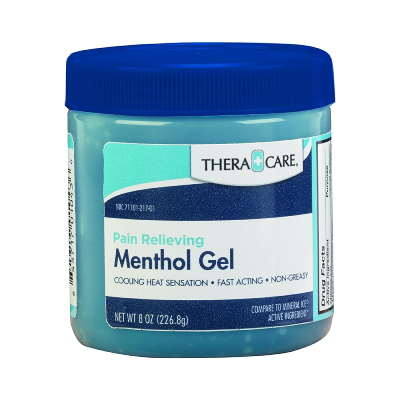
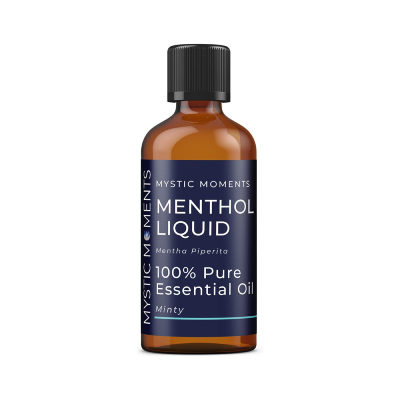
Data Sheet
- Derivation: Tincture, Pharmaceutical
- Primary Purpose: Analgesic | Numbs the tissues of the fist chute.
- Secondary Purpose: Thermal Perception and Paresthesia | Creates a cool sensation around the anus and a tingling sensation within the rectum.
- Active Ingredients: Menthol
- Health Concerns: Exposure may lead to irritation, rash, burning, and other symptoms associated with skin sensitivity.
Functional Properties
- Physical: Scent, Taste | Creates a mint-like scent and taste.
- Physiological: Analgesic, Paresthesia, Thermal Perception | Relieves pain by overwhelming the nervous system with other sensations (coolness and tingling).
- Antimicrobial: None.
- Neurological: None.
Tips
- Amount | Use less than five or six drops per liter to prevent overstimulation that can reduce the length of a fisting session. Consumption of seven or more grams can result in poisoning.
Mentholatum
Mentholatum is used topically to decrease pain, itching, and congestion. Mentholatum has many many active ingredients, which may include menthol, camphor, eugenol, and thymol, which are mixed together in petrolatum. To add petroleum distillates to water-based lubes, specific mixing instructions, heat, or binders are needed.
PHARMACEUTICAL
Mentholatum
Analgesic and Thermal Perception
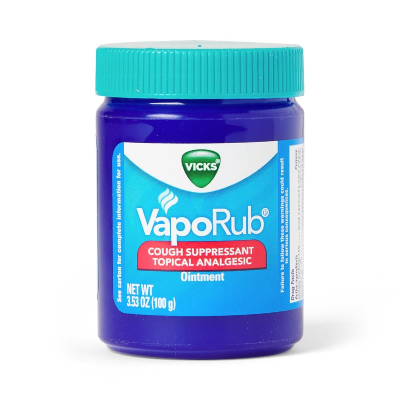
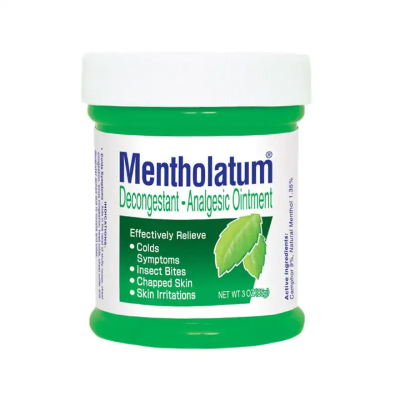
Data Sheet
- Derivation: Pharmaceutical
- Primary Purpose: Analgesic | Numbs the tissues of the fist chute
- Secondary Purpose: Thermal Perception and Paresthesia | Creates a cool sensation around the anus and a tingling sensation within the rectum.
- Active Ingredients: Menthol, Camphor, Eugenol, Thymol
- Health Concerns: Exposure may lead to irritation, rash, burning, and other symptoms associated with skin sensitivity. Camphor is known to cause liver damage, stroke, and heart issues.
Functional Properties
- Physical: Scent, Taste | Creates a mint-like scent and taste.
- Physiological: Analgesic, Paresthesia, Thermal Perception, Reparative | Relieves pain by overwhelming the nervous system with other sensations (coolness and tingling). Reduces swelling and promotes some healing.
- Antimicrobial: Antiseptic & Preservative | Impedes/hampers bacterial and fungal growth..
- Neurological: None.
Tips
- Amount | A large dollop mixed within lube may cause overstimulation. Use 5 -10 mL max. See Camphor and Menthol for overdosing considerations.
- Application | Do not apply pure Mentholatum directly to the mucosal membrane.
- Ingredient Variations | Not all mentholatum-type products have the same ingredients. For example, Vicks VapoRub also includes nutmeg, cedarleaf, and turpentine oils.
Mint Oil
The primary active ingredients in mint oil include menthol and menthone. The menthone is responsible for the pleasant tastes and aroma of peppermint and spearmint.
Tincture
Menthol
Aromatic and Thermal Perception
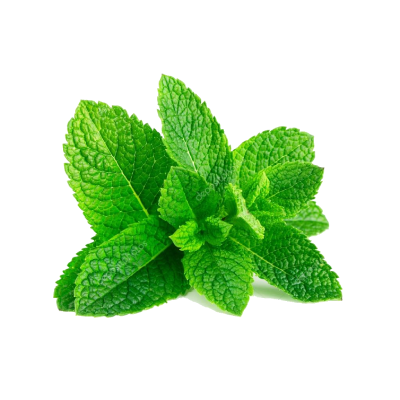
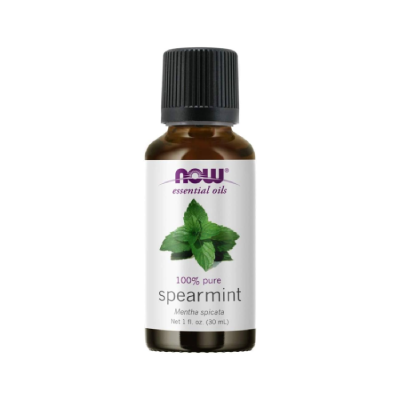
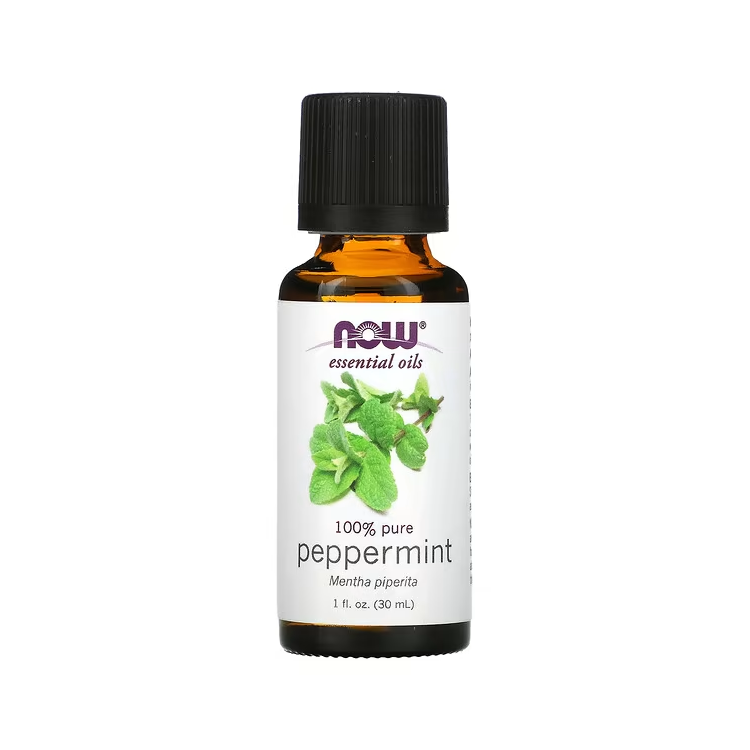
Data Sheet
- Derivation: Tincture
- Primary Purpose: Aromatic | Creates a pleasant, mint scent.
- Secondary Purpose: Thermal Perception, Analgesic, Paresthesia | Creates a cool sensations, numbs the fist chute, and triggers tingling inside the hole.
- Active Ingredients: Menthol, Menthone
- Health Concerns: Exposure may lead to irritation, rash, burning, and other symptoms associated with skin sensitivity.
Functional Properties
- Physical: Scent, Taste | Creates a mint-like scent and taste.
- Physiological: Analgesic, Paresthesia, Thermal Perception | Relieves pain by overwhelming the nervous system with other sensations (coolness and tingling).
- Antimicrobial: Antiseptic & Preservative | Reduces/limits some bacterial and fungal growth.
- Neurological: None.
Tips
- Amount | Use less than five or six drops per liter to prevent overstimulation that can reduce the length of a fisting session. Consumption of seven or more grams can result in poisoning.
- Potency | Peppermint has higher potency levels than spearmint. Less oil is needed to obtain similar results.
Peppermint
See Mint Oil.
Spearmint
See Mint Oil.
Voltaren Gel
See diclofenac gel and Heatlh Considerations | Case Study: Off-label Usage of Voltaren Gel.
Additive
Information regarding the additive is presented in the following format.
DERIVATION
CODE
Additive Name
Primary Purpose(s)
Data Sheet
- Derivation: Derivation Source
- Primary Purpose: Purposes
- Secondary Purpose: Purposes
- Health Concerns: Health-related Issues
Functional Properties
- Physical: Scent, Taste, Texture, and Appearance | Description of new physical properties obtained when added to lube
- Physiological: Therapuetic, Analgesic, and Somatic | Description of physiological modifications within the fist chute
- Antimicrobial: Antiseptic and Preservative | Description of antimicrobrial benefits
- Neurological: Psychotropic | Description of alteration in neurological perceptions
Watchdog Databases
The following two databases provide basic information about additives in lubrications.

Figure 4.1: Environmental Working Group - Skin Deep
The Environmental Working Group (EWG) Skin Deep database provides information about the safety and health effects of ingredients in personal care products. It educates consumers about ingredients to avoid and encourages manufacturers to prioritize ingredient safety and transparency.
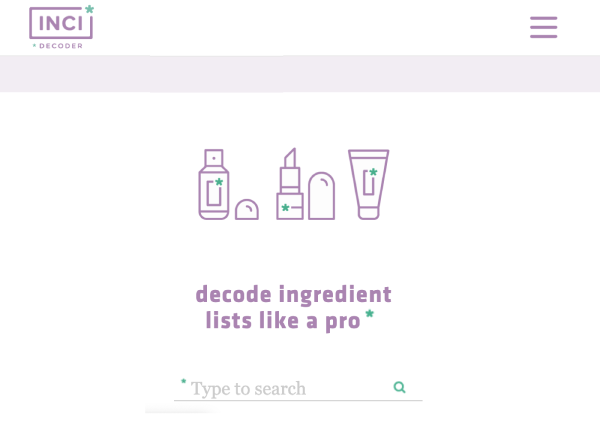
Figure 4.2: INCI Decoder
The International Nomenclature of Cosmetic Ingredients (INCI) Decoder provides information about ingredients that includes common names for the ingredients, their functions in the product, their source or origin, and any relevant safety or regulatory information.
Content Development
The following material is under consideration in the development of this topic:
Objectives
Upon completing this course, the student will be able to:
- Give three reasons for adding additives to your lubricant.
- Explain why some additives may cause short and long term health concerns.
- Recite one etiquette protocol related to lubrication additives.
Note: Objectives should follow instructional design standards and be easily measurable with little ambiguity.
Supplemental Content
Blog Articles
- My Arm Is Burning!
F2 Promotional Materials
- Thursday Erotica/Neurotica: N/A
- Skills: N/A
- Protocols:
- Disclose Lubrication Contents
- FWOTD:
- Apothecary
- Tincture
- Paresthesia
Outline (Proposed)
- Additive Classifications
- Derivation
- Tinctures
- Pharmaceuticals
- Cosmetics
- Traditional Bases
- Functional Properties
- Physical Properties
- Physiological Properties
- Antimicrobial Properties
- Neurological Properties
- Health Considerations
- Tissue and Organ Damage
- Allergic Reactions
- Compromised Judgement
- Off-Label Usage
- Case Study: Off-label Usage of Voltaren Gel
- Quick Reference Table
- Protocols
- Etiquette
- Disclose Lubrication Ingredients (Additives)
- Additive Index
- Additives
- Supplemental Resources
F2 Resources
These individuals have indicated they continue fisting with this condition:
- N/A
Brain Dump - Staging Area


